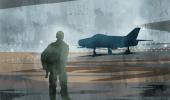'I was a young pilot in the IAF and Tom Cruise (with his genuine Ray-Bans) was now an icon with his sensational performance in Top Gun.'
'The IAF, maybe influenced by the movie, decided to 'issue' pilots Ray-Bans as part of their flying kit,' remembers IAF Veteran Air Commodore Nitin Sathe.
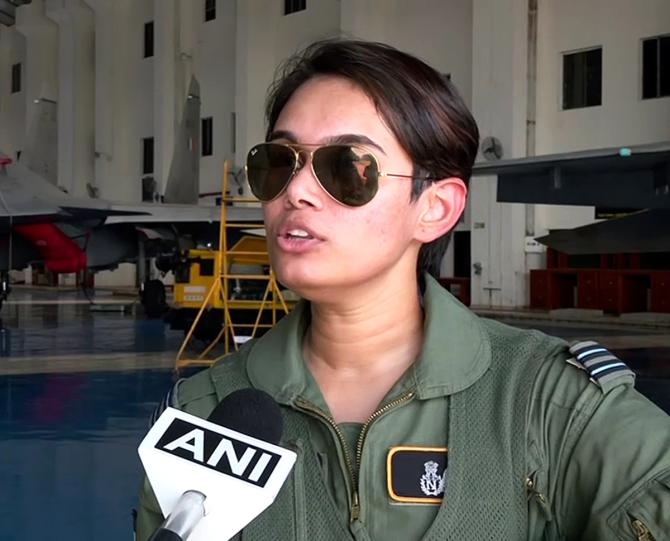
A few days ago, I came across a video forward which brought out a historical perspective about the Ray-Ban sunglasses that pilots just can't do without, whether on ground or in the air. And obviously, this took me back four decades, pondering over my experiences with the Ray-Ban as an Indian Air Force pilot.
"Don't take such a dim view of the world! Remove those sunglasses and see how bright and colourful things are around you!" my flight commander once remarked when he saw us IAF rookies wearing our newly issued sunglasses even inside the crew room and office premises.
We were also advised to remove them while interacting with seniors and ladies, something we weren't ready to accept.
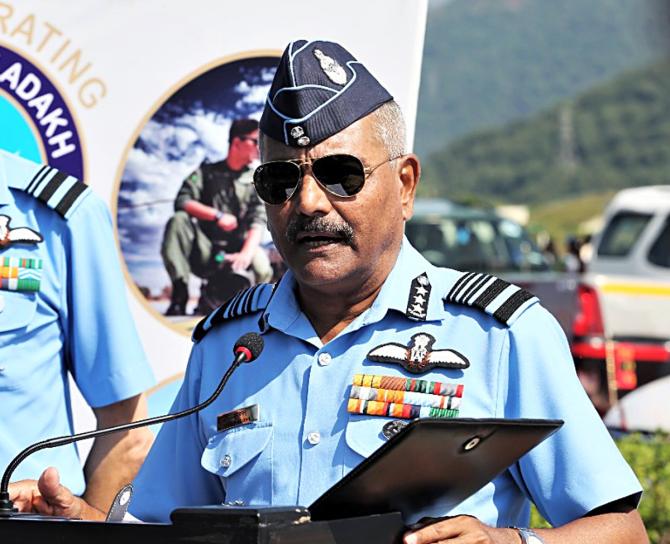
My first encounter with Ray-Ban aviators was when I was just about to join the armed forces.
Roaming around a Madras market that boasted of 'genuine' 'foreign' goods at cheap rates, I was looking around for something that suited my pocket which carried a 100 rupee note.
A man selling sunglasses, hooked all over his shirt, suddenly stood in front of me.
I picked on a tear-drop shaped one with green tinted shades hanging from his left breast pocket.
'How much?' I asked.
'This?' he asked, and before I knew it, in a blink, I saw a green shaded world around me, as the glasses found their way from the hook on his shirt over my eyes.
A small pocket mirror appeared out of nowhere and a transformed 'smarter' me stared at myself.
'How much?' I asked again. 'Only 100!' he said, a bright smile appearing on his sun-tanned face revealing his tobacco stained teeth.
My heart sank. I had planned to buy little-little things for everyone who mattered back home and this Ray-Ban was going to ruin it all.
'Na na, no way!' I exclaimed, and walked away with the salesman in tow. He went on haggling: '80? 70? 60? 50?...'
By then, I had lost interest in the eyewear and wanted him to leave me alone.
'How much you pay?' he asked in an exasperated tone.
'10', I mumbled, walking away quickly, feeling sheepish and foolish.
He kept up with me and wiping the pair I had liked with a soft yellow cloth that hung around his neck, handed me the shiny sunglasses.
'Pay 10! I am hungry and therefore I am selling at loss!' He sure sounded irritated.
I had to honour the deal and that made me a proud owner of my first Ray-Ban!
Sometime later, when I looked at my green lenses closely, I discovered, much to my dismay, that I was the proud owner of a ROY-BON! In any case, it could pass off as the expensive brother from afar and I let this miniscule fact not be known to anyone.
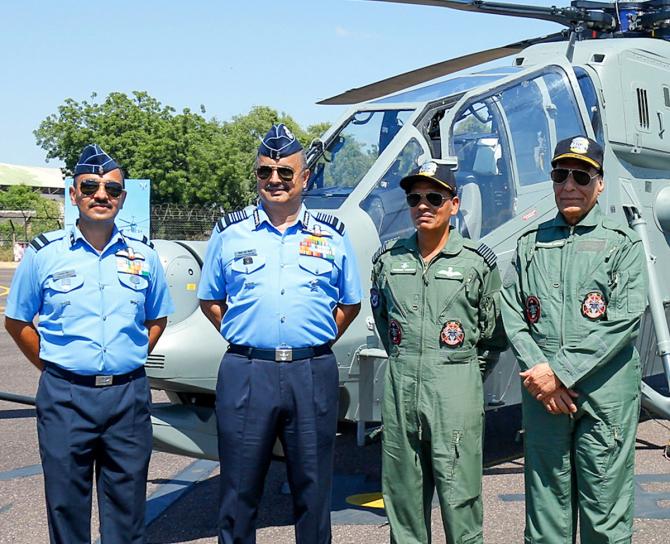
A few years later, I was a young pilot in the IAF and Tom Cruise (with his genuine Ray-Bans, but of course!) was now an icon with his sensational performance in Top Gun.
The IAF, maybe influenced by the movie, decided to 'issue' pilots Ray-Bans as part of their flying kit.
We needled our logistician friends to get them to us ASAP and waited earnestly for the centrally procured consignment to arrive at our base, situated in the far east.
Looks aside, we were quite confident that, with the green glasses draped around our eyes, our green overalls with the many zips and our ankle length flying boots, the girls were sure to fall for our charms.
When the Ray-Bans finally arrived, there was a problem.
The supply was well below the demand, and, naturally and logically so, (most unnatural and illogical, we helicopter pilots thought!) the fighter pilots were to be issued with this 'flying clothing' item first.
We were told that as and when more stock was received, we, at the lower end of the flying chain, would be issued ours.
The cost of the glasses was quite prohibitive, and therefore, many of us who did not want to be outdone by our fighter friends, went and bought ourselves cheaper Roy-Bons in the interim!
We were secretly overjoyed to learn from our fighter pilot friends that they weren't too happy with their free 'issue'.
The sunglasses were either too large or too small; hardly anyone got one that suited their faces.
It seemed that all unsold sizes had been palmed off to the IAF and we hoped that once our turn came, sunglasses of correct sizes would be available.
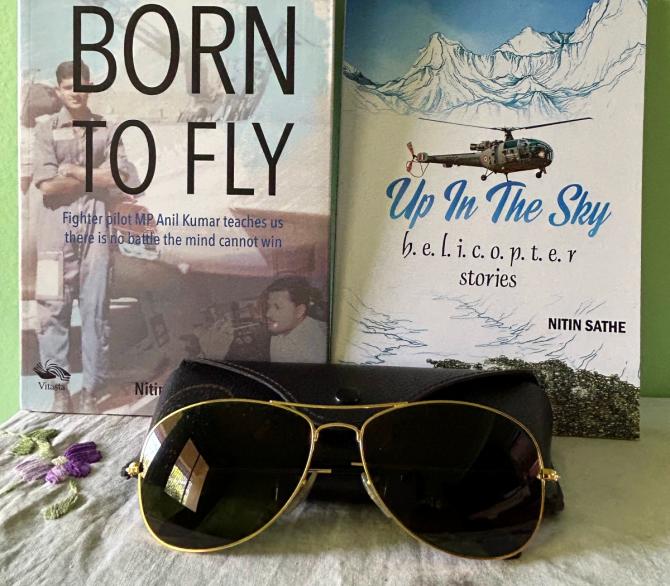
Style aside, it was due to aeromedical reasons that pilots were expected to wear these glasses while flying.
In the good old days, aircraft were unpressurised and not air-conditioned as they are today and those who flew them had to endure extremes of temperature.
Just imagine, taking off from a blistering desert in 45 degree heat and climbing to altitudes where the mercury dipped to as low as 35 below zero.
Aviators, in those times, used leather clothing to keep themselves warm in the sub-zero temperatures encountered while flying at high altitudes.
Leather prevented cold air from getting in from head to toe.
The head was covered with a fur-lined leather helmet which housed the ear pieces, the face was covered by the mask connected to the breathing apparatus and the eyes protected by fur-lined plain goggles.
The plain glasses, however, did not protect the pilots from the sharp glare of the sun as well as exposed them to a high dosage of ultra-violet and infra-red radiation.
Very often, during sorties, these plain glasses would fog up, forcing the pilots to remove them and exposing the eyes to the extreme cold.
The American military turned to Bausch and Lomb, the leading eyewear manufacturers of those times to design special goggles for their pilots.
Thus was born the concept of 'anti-glare' glasses, and the research and development of the same continued through the second world war.
They were later patented as Ray-Ban Aviator sunglasses which used Kalichrome lenses designed to filter the blue light and sharpen details, thus making them ideal for misty conditions.
I still have my Ray-Bans stored away somewhere with my not-in-use flying clothing. Maybe, it is gathering dust along with my worn out maps in my navigation bag, the leather case which accompanied me on the many missions I flew.
Sadly, I can't wear them anymore as poor vision compels me to use plain glasses to look far and near. But my love for the Ray-Ban endures.
IAF Veteran Air Commodore Nitin Sathe is a rediffGuru and you can ask him your questions about the defence services here.
A helicopter pilot who served the IAF for 35 years, he is also a frequent contributor to Rediff.com and you can read his earlier articles here.
Feature Presentation: Rajesh Alva/Rediff.com




